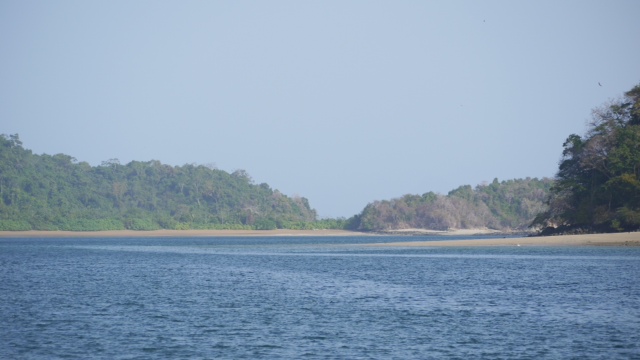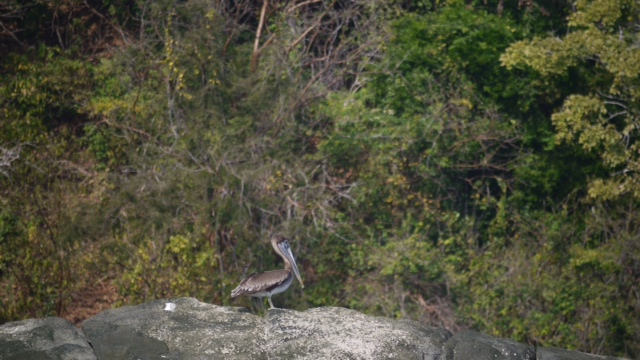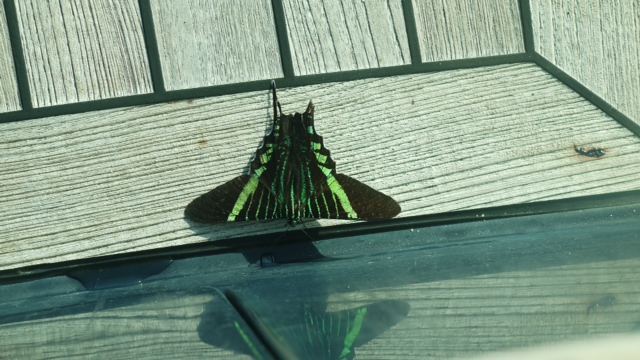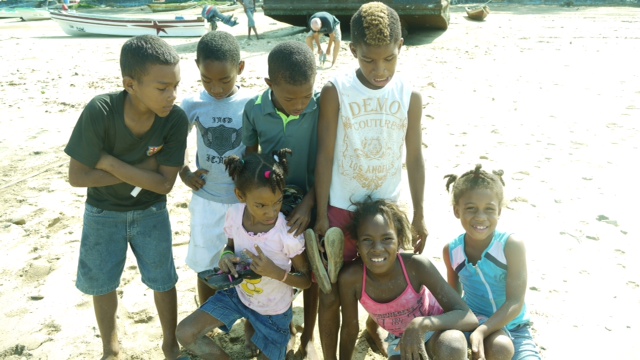Escape to Contadora, Las Perlas Islands

Seaduced
John & Jane Craven
Wed 5 Feb 2014 22:36
Wednesday morning came and we heard that a delay had occurred and they would not now be ready until Thursday - groan! Having looked at the chart though it was clear that so long as left by lunchtime, we would have time to get to the northern most Las Perlas island of Contadora.
Each night since we arrived here in Panama, we have been woken up about 2.30am with a boat going through the anchorage at such a rate that water came through our back window for the first time on four years. We always open the window as soon as we arrive anywhere, and it is the last window we shut before we leave. The rolling motion caused by the wake was so bad that it felt as though the anchor would be ripped out of the sea bed despite being well bedded in with lots of chain!
While we waited for our passports, we went shopping to the mall for a few bits and pieces including data SIM cards for the iPads for John and I, and a phone SIM card for Doug.
After that it was off to the supermarket, again, for the last bits and pieces and the fresh stuff.
Thursday dawned, the passports arrived and by 11.30am we had upped anchor and were thankfully on our way. The winds were very light for the first few hours, but then picked up and we had a good sail across, arriving on Contadora about 4.30pm. The anchorage was fabulous, so calm and still that we thought we must be aground!
The Las Perlas islands got their name after two Spanish Conquistadores, Gasper de Morales and Francisco Pizarro, stole a large amount of pearls from the indigenous King Toe. In 1515, they defeated the king and enslaved his skilled pearl divers. The 31 carat 'Peregrina' pearl belonging to Queen Mary Tudor of England came from these islands.
Another escapee from Panama, Nexus, was in the harbour as well. Amazingly, when we went to chat to them, the American couple who own the boat had lived in St Anne's and Scorton, he had worked at British Aeropsace in Warton, and she had been a teacher at Kirkham Grammar school where their children's went - how weird is that? Another example of small world syndrome!
We went for a short walk ashore, there is a hotel and a small village area with a few basic shops and a dive centre. We didn't get that far as it was getting dark and although the island is small it would be easy to get lost as all the streets look the same, and it was time for the bugs to come out to play, so we headed to the bar for sundowners, and returned to the boat for a BBQ.
The next day we motored off to Espiritu Santo, supposedly one of the more popular anchorages on the island. We found it largely empty, surprisingly and spent another calm night relaxing. The wind did pick up a bit more in the evening. What we have noticed here is that the temperature noticeably drops in the evening, making it much easier to sleep at night, we hardly even need the fans on to sleep.
At anchor in Espírito Santo
The scenery is beautiful here if a little more rugged than we are used to!
Hard at work cleaning the hull
The water in the anchorage was teaming with life. There were hundreds of pelicans diving for food and the water seemed to be almost boiling, there were so many fish jumping, splashing and diving. Other birds such as plovers and sandpipers are also everywhere. What has surprised us all while we have been here is the sheer amount of butterflies, literally thousands and thousands fly round the boat constantly, in huge swarms.
One of the many thousands of pelicans here.
Our current anchorage is between the small settlement of Esmerelda Village and Rio Cacique. We had been very successful fishing on the way here. We caught a small wahoo at first, and then put the line back out to see if we could catch it's older brother. We didn't manage that but we did get a decent sized mahi-mahi, something we haven't had in ages. The main attraction here is the river itself and the guidebook suggests a dinghy ride up river to check out the birds and other wildlife in the mangroves.
Heading up river
It was really peaceful - no engine noise just the noise of the wildlife
We had to wait longer than we expected from the guide book in order to venture up river. The river has a strong current at high tide, about 3 knots so use were able to switch off the engine and just drift along. Some steering was needed by oar to avoid low, overhanging branches and trees. The whole area was full of birds, we could hear them in the trees, and even managed to spot a few parrots flying around.
This gives some idea of the amount of birds flying around all the time.
This butterfly was having a rest on the back deck - we have seen thousands of these flying round, but they move too quick to photograph normally.
We stopped in Canas village, a small settlement on one of the islands and all the local children came out to help haul the dinghy up the beach.
Today, Tuesday, was a great day. We caught a mahi-mahi in the morning and a tuna in the afternoon - our first ever tuna. The flesh on it was so dark though, we have never seen tuna that colour in our lives! The funny thing was, we went to the bar with some friends from another boat and despite having two fish in the fridge, ended up staying for a burger and chips. The boys were desperate for a change to our very healthy fish and salad diet! Also, the big news of the day were the whales! We have eventually seen whales! John spotted the first when he saw a spout about half a mile behind the boat. By the time we were all on deck, the whales were splashing their tails and jumping and breaching, a magnificent sight, truly awesome! One whale even came within about 50 metres of the boat! A day to remember for sure.
As we are part of the World ARC rally, we have now been issued with our 'Yellow Brick' tracking device. If you go onto the yellow brick website, and look at the World ARC rally, you will be able to see where we are at all times. There will be quite a few times when we are without an email signal and unable to post blogs, so at least you will know where we are! The blog will continue, but will probably be in batches rather than regular posts.
Sent from my iPad








